Menu
You can manage your membership and billing method by clicking here
Terms of Service
Privacy Policy
Copyright © 2025 Office of Immigration Australia, a private company registered in Australia. All Rights Reserved.

Checking membership status...
 EXCLUSIVE MEMBERS ONLY ACCESS
EXCLUSIVE MEMBERS ONLY ACCESSTo access this month’s edition & Member’s only resources, enter your registered email address.
This bulletin is for members only, and provides our members with month to month updates on Australian immigration policy changes and consequential opportunities. Opportunities are found via federal and state government policy shifts for the demand and supply for certain occupations.
This bulletin will keep you up to date so that you do not have to employ expensive immigration lawyers to provide you with monthly research.
June 2022 has landed, and if you are a skilled worker, Australia really is your oyster right now! The global pandemic has caused widespread labour shortages, and demand for skilled staff is at its peak.
A new national survey reveals that 85% of Australia’s businesses report staff shortages, which are holding back their ability to operate at full capacity. Now more than ever, the sun is shining bright on Australian immigration!
As of 1st June 2022, the Priority Migration Skilled Occupation List (PMSOL) remains in effect. Visa applications with an occupation on the PMSOL continue to receive priority processing.
In this month’s ‘Federal News’, the Australian Labor Party has won the 2022 general election for the first time in almost a decade. With almost 30% of the current Australian population born overseas, the Labor Party now pledges to boost migration of overseas skilled workers to deliver on their promise to plug the nation’s skill shortages.
In this month’s ‘Economic News’, the heads of Australia’s biggest listed companies have urged the newly elected government that Australia urgently needs to ramp-up migration levels after the pandemic virtually stopped the influx of skilled workers that are vital to the country’s growth.
In this month’s ‘State News’, State and Territory immigration systems remain in flux. The State Skilled Migration Programs for the Australian Capital Territory (ACT), New South Wales (NSW), Tasmania and South Australia (SA) remain open to Offshore Applicants! All other state and territory programs still remain closed to offshore applicants, due to pandemic restrictions. The Australian Government hopes the influx of new visa holders will help alleviate labour shortages around the country.
In this month’s ‘Student News’, Australian universities are now offering incentives for International Students, including discounts of up to A$10,000, and additionally the Australian Government has also increased the stay period for international students to provide additional post-graduation work options.
All this and much more in the June issue of The Australian Immigration Bulletin! Let’s take a deeper look at what has happened so far and what is planned for the remainder of June 2022 in Australian Immigration, so that you can start planning!
As legislation and travel requirements are constantly changing, we strongly recommend obtaining advice on your individual situation from a Registered Migration Agent.
Please click here to book a consultation with one of our Registered Australian Migration Agents, located in Australia.

Australia’s 2022-23 Migration Program has been carefully designed to boost the social and economic outcomes that meet Australia’s needs. In fact, the migration programme was first launched in 1945 following the aftermath of World War 2. Given this long history, it is worth understanding how it works. The Australian Immigration Bulletin exists to help explain this in more detail.
As we’ve entered the 6th month of the year, join us for a look at the latest news and developments in the world of Australian Immigration!
We asked those who have established themselves with skilled jobs to share their experience and tips for a career in Australia.

We spoke with Prisciliana, a skilled migrant and an engineer currently working for a private company.
Can you tell us a little about you?
I am a dedicated professional with a strong background in civil engineering, roads supervision and maintenance, and project control. She is also an Environmental technologist (Water and Sanitary Sewer Analysis). Highly responsible and well-practised in converting management demands into desired results through prioritizing and organizing tasks.
What was your first job?
I started at IHG as an Administrative Officer, helping the Procurement Engineer to implement a new maintenance system.
What did you like and dislike about this job?
I love to come back to work with challenges that make it possible to think and use engineering skills. However, I dislike being at the workshop and have to understand mechanical issues.
What was the biggest challenge, and how you deal with it?
My biggest challenge was when they give me a manager position, and I was afraid about my English. I was pretty sure that I could handle the new place, but I felt insecure about my accent. I had a long talk with my boss, and he was very willing and helped me a lot with my ‘English issue’.
How did you find out about it?
I was in a pub and started a conversation with one unknown. This guy knew many people who work with civil engineers and talked about me to his friends. And one of his friends sent me an email inviting me for a chat.
How did you apply?
I went to this informal meeting, and we talked a lot about roads surfacing.
How did you convince them you had the skills to do the job?
During this conversation, he noticed that I had a lot of experience. Although I always studied roads surfacing in Australia, this helps me know and understand what he was saying about his company.
What did you learn about yourself doing this job?
I learn that I am capable of doing anything that I want. I become more confident, and even with “not perfect” English, I can deal with my employees and solve my daily problems at the company.
What tip would you give job seekers from other backgrounds eager to get their first job in Australia?
Never give up! If English is a big issue for you, do your best and show how capable and proactive you are.

If you’re a skilled worker, the world really is your oyster right now.
The global pandemic has caused widespread labour shortages, and demand for skilled staff is at its peak.
In fact, according to the National Australia Bank quarterly survey, a record 85% of Australia’s businesses report staff shortages, which are holding back their ability to operate at full capacity.
Further, a recent survey by Australia’s Information Industry Association found that 75% of technology companies are concerned skills shortages will be a barrier to expand their businesses.
The workforce shortage means skilled employees are in hot demand and Australia needs to remain highly competitive if we are to fill the gaps so crucial to the prosperity of the nation.
And, the skills Australia need are wide and diverse.
From aged care workers to locksmiths, electricians to aviation engineers, pharmacists to ICT project managers, the National Skills Commission’s most recent priority skills list is rich with career diversity.
Consequently, plugging Australia’s skill supply gap isn’t a simple fix.
Government measures including the targeting of apprenticeship incentives and training funding go some way, but these levers can take years to come to fruition.
Skilled migration is utilised as a rapid lever to plug holes when there is a shortfall in the local talent pool.
New research from the Monash Business School found that economic opportunities shape the location choices of the highly skilled more than anything else.
People with the skills know their value in the market, and they are looking to use their skills, to make hay while the sun shines.

The Australian Labor Party has won the 2022 general election for the first time in almost a decade.
The Labor Party pledges to recruit overseas health workers to deliver their promise to provide nurses 24/7 in aged-care homes and emergency Medicare clinics, in an acknowledgment of the nation’s shortage of skilled workers. The problem extends well beyond the health sector. Skills training is important, but with unemployment set to fall below 4 per cent and regrettably few year 12 students studying maths and advanced science subjects it will not be solved overnight, especially in engineering.
Increasing the skilled workforce will be vital if Australia is to achieve the economic growth to pay down debt, fund defence upgrades, build new infrastructure, transition to greener energy and improve aged care, disability and health services. Post pandemic, Australia’s population is projected to be 855,000 smaller in a decade than pre-Covid forecasts. The shortfall, caused by a halt to immigration during the pandemic, is an opportunity to increase the nation’s intake of skilled migrants. Doing so would boost the skilled workforce, grow the tax base and allow businesses to expand. Taking in those of working age and their children also would slow the overall ageing of the population.
As a peaceful, prosperous, democratic and tolerant nation that has welcomed generations of newcomers from diverse cultures, Australia has always been in strong demand among those seeking new opportunities. Authorities should be selective in recruiting applicants with good qualifications, experience, English skills or a willingness to learn the language and to assimilate. But with international competition for skilled workers increasing and Covid raising concerns about immigrants being unable to travel home in the event of a serious outbreak, some industries believe extra incentives are needed. The construction industry has suggested tax breaks; the restaurant and catering industry is calling for free flights for hospitality workers from overseas.
Infrastructure Australia estimates the sector faces a shortfall of 105,000 workers in the next 18 months, with $17.9bn in new road and rail projects and flood reconstruction announced. The reopening of borders will result in about 100,000 more temporary migrants arriving by July than previously expected. But they will only partially ease the skills crisis.

In 2020, almost 30 per cent of the Australian population was born abroad. In Sydney about half the people have at least one parent that was born overseas. Depending on how loosely we define the term “migration background” we can argue that we are a majority migrant nation.
The migrant stock (the official technical term) in Australia now stands at 7.50 million (or 29.1 per cent of the population) – down from 7.65 million in 2020.
In the long-term, this will be a one-off outlier. Australia will continue to import international students and skilled workers at scale. You can look at the federal budget to see that no Treasurer in their right mind would argue for a low migration intake. Our nation will continue to become more diverse every year.
The face of the nation is changing as a new wave of nationalities call Australia home. In the decades after WWII, migrants from Greece and Italy shaped the nation. Upon arrival, they convinced Australians in a heartbeat to take up Mediterranean cuisine, supplement tea with coffee and potatoes for pasta.
We even started to build houses based on the Mediterranean rather than English design principles. Australians have always picked up the best practices and habits of newly arrived migrants. Australians really are suggestable and pliable people willing to be reshaped.
Nowadays migrants come from Asian nations rather than European ones – considering our trade profile that isn’t much of a surprise. We’ve already integrated Asian foods into our diet, and I wonder which architectural elements we might embrace over time. Will the standard Aussie home be built with Feng Shui in mind?
The trend towards becoming an even more Asian nation was slowed in 2019 when Chinese migration to Australia was throttled by the Chinese Communist Party – a little political flex as we will occasionally experience when dealing with China. This will eventually ease as the emerging Asian urban middle-class continues to demand English speaking university education.
Of the 141 officially listed migration source countries, 111 lost population. While three nations stayed stable, 27 nations saw their migrant stock in Australia increase. The South African and Filipino populations in Australia saw growth, as did a few refugee source nations like Afghanistan, and small neighbours of Australia (Tonga, Vanuatu, Samoa).
The Australian-born population in Australia increased by 196,000 between 2020 and 2021. That’s about 15,000 more people than we would have expected, based on data from the decade before the pandemic. This wasn’t the result of a coronavirus baby boom, rather, we saw Aussie ex-pats returning during the pandemic. These returnees tended to have high incomes and decent savings that further added to the local housing boom.
When we look at this data next year, high migration will have returned. Australia will have made itself a bit more culturally diverse yet again. We are well experienced in taking in folks from abroad and absorbing the best their cultures have to offer.
That said, retaining social cohesion is a challenge. Creating opportunities for migrants to interact with the established population as equals in social and professional situations is crucial.
For people to interact as equals, a common language base is necessary. Ensuring English language proficiency must be a priority. This should take place before allowing international students and skilled workers into the country. With humanitarian and family visas, such as training should be provided (and made compulsory).

The heads of Australia’s biggest listed companies have revealed what’s top of their wish-list for the country’s economy in the run-up to the May 21 election: MORE PEOPLE!
Australia urgently needs to ramp up migration levels after the pandemic virtually stopped the influx of skilled workers that are vital to the country’s growth, according to Scott Charlton, chief executive officer of toll-road giant Transurban Group.
To deliver large pipelines across the east coast of Australia including the 2032 Brisbane Olympics “we need development skills, we need construction skills and we need to increase that skilled migration,” he said in an interview with Bloomberg Television at the Macquarie Australia Conference.
His comments were echoed soon after by Susan Lloyd-Hurwitz, CEO of Mirvac, the country’s largest diversified property group. When asked what keeps her awake at night, she was quick to respond:
“The thing that I worry about most all the time is people,” she said in a separate interview. “With skilled migration at the very low levels it has been for the last couple of years, we have a shortage of labour in Australia and so it’s a very hot labour market.”
Australian businesses are facing an acute labour crunch in a red-hot economy where the jobs market is the tightest it has been since 2008. The jobless rate is this month expected to fall below 4% for the first time since the early 1970s.
The country shut its international borders in March 2020 and saw its first drop in population since 1946, from an annual growth rate of around 1.5% before the pandemic. Australia then recorded negative net migration in each quarter from June 2020 through to mid-2021, during which time 97,000 people permanently left the country, according to official government figures.
The largest driver of negative net overseas migration was a fall in temporary visa holders which includes students and skilled workers.

Engineering in Australia is heading for a crisis. We face a severe shortage of professional engineering skills that are essential to the nation’s future. We need to act now, with the backing of the incoming federal government, if we want to realise our ambitions for Australia to achieve a post-Covid economic rebound, future economic geopolitical strength and to be an innovative leader in the world economy.
Breakthroughs in Australian engineering have brought the world the black box flight recorder, the cochlear implant (bionic ear), Wi-Fi, and spray-on skin to treat burn victims, to name a few of our global success stories, but engineers are essential across an enormous spectrum. The Labour Market Information Portal has estimated that by 2025 there will be a need for over 40,000 additional engineering professionals, not including software engineers.
Without urgent intervention to help get more skilled migrant engineers, our ambitions in sustainable infrastructure, tackling climate change, achieving renewable energy targets and thriving amid the leaps and bounds needed to live with AI and data, will flounder.
In December 2021, a summit was held with 60 senior engineering executives, representatives from peak bodies, and academic and research specialists. As a result of this, Australia’s leading research-intensive universities, the Group of Eight (Go8), released a report recommending a bold approach to attract and educate a new generation of creative, future-focused engineers, to secure a stronger future.
The strain on the Australian engineering workforce pipeline has worsened. The impact of the federal government’s Job Ready Graduates program has depleted a sector that was already shouldering a shortfall over the past two years, with borders closed to overseas skilled migrant engineers.
Resolving this crisis is a priority for all Australian engineering sectors.
We are calling now with great effort and focus on the incoming Labor government to work with us to address this crisis. Engineers are a crucial part of the solution for our biggest challenges, and a sustainable workforce, made up of diverse, talented skilled migrant engineers is the best way to achieve this.

Two major Australian Labor Party policies will require a substantial increase in the nurse and doctor workforce — but many are asking where the extra doctors and nurses will come from.
The first policy relates to aged care. The Labor Party proposes that every aged care centre be staffed by at least one registered nurse, 24/7.
The second is the establishment of 50 new urgent care bulk billing clinics.
These policies will require a substantial increase in the nurse and doctor workforce. Much of this increase will need to come from Skilled Migration.
Over the past 30 years, Australia has become increasingly reliant on both overseas-trained nurses and doctors as well as overseas students trained in Australian medical training facilities who go on to join the medical workforce.
Chart one shows the mix of visa categories under which registered nurses have been granted primary visas in the skill stream and the skilled temporary entry category — these would not include registered nurses on working holidaymaker visas, temporary graduate visas or nurses migrating on partner visas or working on student visas.
Australia’s registered nurse workforce has been growing much faster than the rate of general population growth.
While the overall registered nurse and midwife workforce grew at an average of around 7,000 per annum from 2012 to 2017, this accelerated significantly from 2018 to 2021 when the registered nurse and midwife workforce grew at an average of 18,000 per annum as the health system sought to attract back registered nurses who had left the profession, particularly during the pandemic.
Over the last decade, the registered nurse workforce has grown by over 107,000. At the same time, over 50,000 registered nurses have migrated to Australia.
It is inevitable that growing the medical workforce further, will continue to require a significant contribution from migrant nurses and doctors.

The COVID-19 pandemic was the main reason for the drop in overseas-born people living in Australia, with experts concerned about the potential impact on the economy.
Australia has experienced a decline in its overseas-born population for the first time since 2000, new figures released by the Australian Bureau of Statistics (ABS) show, with COVID-19 being the main cause.
In 2021, 29.1 per cent of Australia’s estimated resident population was born overseas (7.5 million migrants), down from 29.8 per cent (7.7 million migrants) in 2020.
“This is the first decrease in the proportion of Australia’s overseas-born population since the year 2000,” the ABS report read.
“The decrease reflected reduced overseas migration in and out of Australia, given the COVID-19 travel restrictions. The travel and migration intentions of many people changed due to the pandemic, including those migrating to work or study,” said Jenny Dobak, ABS head of migration statistics.
“In the first year of the pandemic there were fewer people born overseas migrating to Australia, as well as fewer people born in Australia departing to live overseas.”
Liz Allen — a demographer at the Australian National University — said the drop in the number of overseas-born Australians was concerning.
“Australia is older and smaller than expected, as a result of the COVID pandemic impact,” Dr Allen said.
“That spells some trouble ahead for Australia. Smaller immigration is a problem for Australia because, even prior to the pandemic, Australia did not have sufficient numbers of local population in the working-age ranges to offset those leaving the workforce.
“So we’re going to have some really tough economic times beyond the pandemic. The pandemic was really just a start of the beginning of Australia’s very tight fiscal situation,” she said.
Simon Kuestenmacher — co-founder of Melbourne-based Demographics Group — agreed that the latest figures could negatively impact on Australia’s economy.
“Australia fully relies on net overseas migration for the workforce,” he said.
“We are running a business, if you will, as a country that needs migration. And we are struggling a lot because we don’t have those migrants,” he said.
The largest group of overseas-born Australian residents in 2021 were born in England (967,000 people), followed by India (710,000 people), China (595,000), New Zealand (559,000), Philippines (310,000), Vietnam (268,000), South Africa (201,000), Malaysia (172,000), Italy (171,000) and Sri Lanka (145,000).
Mr Kuestenmacher said these statistics — in terms of diversity — are a world apart from what they were a quarter of a century ago.
“You have two European countries in the top 10 and six Asian nations. And 25 years ago, this was exactly opposite,” he said.
While India was the second-largest group of migrants in Australia, this has decreased in size by 13,000 people in one year.
“People born in India are the second-largest migrant group in Australia. The reason for that is that China essentially [puts] a brake on the amount of people that it let’s go to Australia, otherwise those born in China would have been bigger,” Mr Kuestenmacher said.
He said the Indian migrant base is a very young demographic.
“Most that are here are in their 30s, whereas other migration groups like the Greeks, the Italians, they are now clustered around the late 70s or even early 80s. So the new workforce of tomorrow is the [people from] India and China,” he said.
In addition to further developing the Indian migrant sector, Australia should also boost migration from some untapped markets, according to Dr Allen.

Australia, like much of the world, sustained problems with the frenzy surrounding Covid 19. Consequently, Australia’s Migration Program sets in play a planning level to stimulate the economy.
Australia’s immigration system is unique and constantly in flux, with each State and Territory updating their skilled worker requirements routinely. More information on each Australian State and Territory can be found in this section of the bulletin.

In view of the global pandemic, the Australian government during 2020 and 2021 imposed some temporary travel restrictions. Now various states of Australia have started issuing invitations and nominating the candidates for skilled migration.
Australia has a point-based system for skilled migration. The Australian State and Territory government programs have two ‘point-tested categories’, being;
The ‘Skilled Nominated- Subclass 190’ is a points-tested permanent category for skilled workers who are nominated by an Australian State or Territory government. The ‘Skilled Nominated- Subclass 190’ enables skilled workers and their families to live, work and/or study in Australia indefinitely with full work rights. You would generally be expected to reside for 2 years in the State or Territory which nominated you.
The ‘Skilled Work Regional (Provisional)- Subclass 491’ is a points-tested temporary category for skilled workers who are nominated by an Australian State or Territory government. The ‘Skilled Work Regional (Provisional)- subclass 491’ enables skilled workers and their families to live, work and/or study in regional areas of Australia for up to five years. This nomination then provides pathways to permanent residency after three years. For migration purposes, most locations of Australia outside of major cities (Sydney, Melbourne, Brisbane, Perth, etc.) are classed as regional areas.
Key requirements for an Australian State or Territory Government immigration nomination:
To apply for either of these nominations, ‘Skilled Nominated- Subclass 190’ or
‘Skilled Work Regional (Provisional)- Subclass 491’, you will still need to lodge an Expression of Interest (EOI).
When deciding whether to nominate an applicant, state or territory nominating agencies refer to their own criteria, which vary from state to state. As a starting point, all applicants must show they have an occupation on the relevant state or territory occupation list, and that they have a genuine intention to reside in that state or territory.
State and territory agencies offer a number of different ‘streams’ and generally cater to offshore skilled applicants, onshore skilled applicants, and recent tertiary graduates. Some states also provide options for small business owners, or applicants with family living in the state or territory.
Please note, the below is information on general requirements and does not take into account any of your personal circumstances. You must check the State/Territory information carefully to ensure you can meet all the requirements for nomination.

The ACT Critical Skills List identifies the occupations in current demand in the ACT. This List is important if you want to apply for ACT nomination for either a:
The ACT Government will update this list every four months to make sure that the ACT Skilled Migration Program adapts and responds to the evolving critical skills needs of the ACT economy.
The Canberra Matrix is weighted to ensure that applicants who will make a positive economic contribution to the Territory and/or have demonstrated a genuine commitment to the ACT are more likely to be ranked and invited to apply for ACT nomination.
*ACT nomination does not guarantee a migration outcome. You must still meet the Department of Home Affairs criteria.

To manage South Australia’s COVID recovery response, applicants currently residing offshore are still able to apply.
Depending on your occupation and situation, there are two state nomination options available for skilled migrants through South Australia.
For South Australian state nomination, prospective applicants must meet the Department of Home Affairs requirements, state-specific occupation requirements and have skills in an occupation that is available on the South Australian Skilled Occupation List. Offshore applicants meeting the minimum published requirements can now lodge a Registration of Interest (ROI).

Temporary restriction on new applications in place: The Tasmanian Skilled Migration State Nomination Program now has only very limited nomination places remaining, and enough on hand applications to expend their full quota by the end of June 2022. As a result, new applications are temporarily restricted to invited candidates only. If you have already received an invitation, your application will continue to be processed by Migration Tasmania. This temporary restriction is expected to end as of 1st July 2022.
Changes to nomination requirements:
Only minimal changes have been made to nomination requirements for the Tasmanian 2021-22 program year. A summary of this information is below:
The two state nomination options available for skilled migrants through Tasmania are:
The Tasmanian State Nomination Skilled Migration Program supports Tasmanian businesses and increases the state’s working age population. It does this by attracting and retaining migrants with skills genuinely in need by employers, or with the capacity to settle in Tasmania through skilled employment in the long-term, and business activities that will increase employment opportunities.
Due to the effects of Covid-19, Migration Tasmania’s current nomination priorities continue to be:
Tasmania’s skilled migration program is for people wanting to move to the state who have skills that Tasmania need. Skilled migrants are attracted to Tasmania because of the state’s enviable lifestyle, career opportunities, affordable housing, reputable schools and a globally recognised university.

The New South Wales government has invited applications from offshore migrants under the following nomination streams:
The NSW State Government announced that offshore applicants skilled in certain ANZSCO unit groups are still eligible for NSW nomination.
Offshore candidates criteria:
If you are residing offshore, you must:
*Please note: Invitation rounds occur throughout the financial year.
Some of these identified ANZSCO unit groups include: engineering managers, health and welfare service managers, production managers, primary and secondary school teachers, pharmacists, dental practitioners, midwives, registered nurses, social workers, chefs, cooks, and other professions on the Priority Migration Skilled Occupation List (PMSOL).

Program Status Update
The Queensland Skilled Migration Program is currently open but due to current Covid-19 restrictions this is still currently available to onshore applicants only. A review will be made at a later date to open the program for skilled workers living offshore.
For the Skilled Migration Program, Migration Queensland will currently only accept “decision-ready” applications (onshore applicants only).
The Australian Migration Bulletin will continue to update you regarding the Queensland State nomination migration program for offshore applications over the next monthly bulletins.

Program Status Update
The 2021-22 migration program is well underway and the Northern Territory remains open for new onshore nomination applications. Offshore applications remain currently closed due to Covid-19 restrictions.
The Australian Migration Bulletin will continue to update you regarding the Northern Territory nomination migration program for offshore applications over the next monthly bulletins.

Program Status Update
The 2021-22 Western Australia migration program remains open for new onshore nomination applications. Offshore applications remain currently closed due to Covid-19 restrictions.
The Australian Migration Bulletin will continue to update you regarding the Western Australia nomination migration program for offshore applications over the next monthly bulletins.

Program Status Update
The 2021-22 Victoria migration program remains open for onshore nomination applications. Offshore applications remain currently closed due to Covid-19 restrictions.
The Australian Migration Bulletin will continue to update you regarding the Victoria nomination migration program for offshore applications over the next monthly bulletins.

The Priority Migration Skilled Occupation List (PMSOL) identifies 44 occupations which fill critical skills needs to support Australia’s economic recovery from COVID-19. The list is based on expert advice from the National Skills Commission and consultation with Commonwealth departments.
Visa applications with an occupation on the PMSOL will be given priority processing. All other skilled occupation lists will remain active, but the PMSOL occupations will take priority.
The list is temporary and priority occupations may change as Australia recovers from the pandemic. The Government and the National Skills Commission will continue to monitor the impact of COVID-19 on the Australian labour market and assess Australia’s skills needs as they evolve and new sources of data emerge.
There has been no additional changes during the month of May 2022 to the Priority Migration Skilled Occupation List (PMSOL). Strengthened labour market testing will continue to allow numbers of sponsored skilled workers to migrate to Australia to fill urgent skills needs in critical sectors, helping to create Australian jobs and rebuild Australia’s economy.
This bulletin segment will be updated with the most up-to-date list when priority occupations change.
As of 1st June 2022 , 44 occupations remain on the PMSOL including (ANZSCO codes):
Those who are not fully vaccinated are still required to obtain a travel exemption and will be subject to the relevant state and territory quarantine requirements. Unvaccinated travellers must enter hotel quarantine for 7 to 14 days, depending on their state of arrival.
Please see the list of vaccines that are recognised by the Australian government for travel purposes here. Fully vaccinated visa holders should also check Australia’s travel requirements prior to departure.

Senior Australian business leaders have urged the federal government to address the nation’s labour crisis by boosting migration to fill jobs, warning a failure to do so risks causing a slump in economic growth.
Diane Smith-Gander, who chairs the Committee for Economic Development of Australia, and is a director of energy company AGL and chair of buy now, pay later group Zip, believes the top three priorities for the federal government should be: increasing the participation of women in the workforce, addressing the skills shortage that has reached a crisis point for the country, and decarbonisation of the economy.
Tony Shepherd, a former president of the Business Council of Australia, director of Snowy Hydro, EnviroPacific, and chair of Venues NSW, agrees that the top priorities of the government have to be addressing the skills shortage and the productivity of the nation. “We’ve got a crisis. We need workers. It’s constraining industry and business generally,” he says.
The tight labour market has seen Australia’s unemployment rate fall to 4 per cent, its lowest levels since the mid-1970s. In the Reserve Bank of Australia’s May Statement on Monetary Policy, it forecast the unemployment rate would fall to 3.5 per cent by next year – the lowest level in 50 years.
Companies from BHP to small café owners are being hampered by labour shortages. Roles from train drivers to waiters to miners remain unfilled. Cafés in some cases are operating on reduced hours, while BHP was forced to downgrade its production forecasts for its nickel and copper divisions because of staff shortages.
A lack of workers in Australia is partly because of the decline in immigration over the past two years when the government shut the international border.
Peter Shergold, who was the head of prime minister and cabinet in the Howard government, also says the nation has to increase migration immediately. “Australia still depends for its economic growth and development on large-scale recruitment of labour from overseas.
Shergold says it’s the first time in three generations that Australia has not had mass migration. He wants to see a greater opportunity for temporary migrants to progress to become permanent residents, and also for the university and TAFE sectors to become integrated. While Australia needs more science graduates, Shergold says it also needs more people willing to work in aged care and childcare.
A tight labour market has pushed up wages, which has taken centre stage in the federal election campaign alongside the cost of living and interest rate rises.

Evolution Mining executive chairman Jake Klein has backed calls for Australia to lift its skilled immigration intake to ease the growing skills crisis across the Australian resources sector.
Evolution downgraded its annual production guidance on Thursday after revealing that more than a quarter of the workforce at its Cowal gold mine had tested positive for Covid-19 in the March quarter, with staff forced to isolate as close contacts.
Pointing to troubles finding skilled labour for its Kalgoorlie operations in Western Australia, the company joined a raft of Australia’s biggest mining companies in posting lower output and downgrading production expectations due to the combined impact of the pandemic and skilled labour shortages.
Both BHP and Rio Tinto posed lower production levels from their iron ore operations due to the spread of Covid-19 through their workforce, as well as labour market deficits, with Whitehaven Coal boss Paul Flynn also pointing to the tight market for skilled labour as a risk for both production and cost guidance.
Speaking to reporters and analysts on Evolution’s March quarter production briefing, Mr Klein said Evolution would support any moves to increase skilled migration levels to ease the industry’s skills crisis.
“In a tight labour market like we have at the moment, access to skills without creating rampant inflation – and just not being able to fill roles – is critical to the mining industry and frankly the economy of the country,” he said.

The head of supermarket giant Coles has said Australia should increase its level of immigration to stave off inflationary pressures, warning wages could rise at an unsustainable rate if such action is not taken.
After revealing a sharp 3.3 per cent rise in inflation at its stores for the third quarter of the financial year, Coles’ chief executive Steven Cain said he would like to see more focus on increasing immigration rates to offset rising prices.
“I would certainly like to see more focus on getting more immigration into the country because, eventually, we’ll see rising wages if there isn’t more supply,” Cain said.
“So, in terms of managing inflation in the future, we’ve reached close to full employment, and it’s clear that we need more people in the country with the right skills sooner rather than later.”
Labour shortages have been a major issue for the retail industry in recent months, with many companies unable to find enough workers to man registers, stock shelves and drive trucks, which has led to delays and higher costs for shipping and logistics.
The Australian Bureau of Statistics revealed that inflation for the past year increased by 5.1 per cent, a 22-year high, and more than twice the 2.3 per cent rate of annual wage growth.
Both major parties – particularly Labor – have been touting higher wages as a solution to rising inflation, however, Cain said this could lead to a “flywheel of inflation” which could damage the economy.
“What most economies and banks look for is this sort of ‘sweet spot’ [for wages] that’s between 2 and 3 per cent,” he said. “The danger is that it becomes a flywheel of inflation once it gets into the higher single digits which is rarely good for the economy.”

The year 2022 opened with new hopes for students aspiring to pursue their education in Australia, as the country warmly welcomes international students to their respective campuses. Since the opening of its borders, 56,000 international students have already arrived in Australia.
In his welcome call, Australian Prime Minister Scott Morrison said that the country is lifting travel restrictions to welcome international students and travellers and revising various visa, work rights, and student support policies to provide them with an easy and comfortable stay.
He said, “The return of skilled workers and international students to Australia will further cement our economic recovery, providing the valuable workers our economy needs”.
This welcoming support of Australia makes it one of the top destinations to study, work and settle. Besides, being home to 7 of the top 100 institutions (as per QS World University Rankings) and 7 of the most liveable cities worldwide adds to its value and testifies for its education system and quality of life.
Australian universities have always been recommended for all levels of education, including vocational education and training (VET), both in undergraduate and postgraduate studies. The country is famous among international students for the specialisations offered in Accountancy, Actuarial Science, Agricultural Sciences, Architecture, Allied Health Services, Computer Science and Information Technology, Engineering Management, Teaching, Tourism and Hospitality Management and many more. One of the most appealing aspects of Australia for students is the emphasis on scientific research. Australia is at the forefront of new technology and innovations and offers courses in emerging spaces like the ‘Internet of Things’ or ‘ Artificial Intelligence’. Besides education, the country is also sought-after by international students for its open, transparent and easy accessibility of employment opportunities.
The country, which is accommodating and protective towards international students, is also known for offering excellent post-study work opportunities of up to 6 years. It allows international students to avail invaluable global exposure, which enriches their professional and personal lives. The country’s recent unfurling of new 485 post-study work stream visas, providing students with extended post-study work rights across different regions, speaks volumes about the nation’s consideration towards international students.
Australia is one of the few nations which has always valued skilled personnel and treated its residents equally, irrespective of nationality. With the pandemic having a significant impact on all the industries, the country is looking for skilled workers – both national and international. Hence to attract the best minds worldwide, the country has revisited its Post-Study Work Permit (PSWP). As per the recent PSWP norms, the Australian Government has increased the stay period for international students based on the duration of their course and region. Australia now offers up to four years of Post-Study Work (PSW) rights to international students post completion of their respective bachelor’s degrees. Postgraduate students enrolled in Master’s (Coursework or Research) degree are eligible for up to five years of Post-Study Work Rights.
International students who have recently graduated or completed their course program from an Australian institution can apply for a Temporary Graduate visa (subclass 485). The move will help them avail the benefits of working in one of the most advanced, progressive, and fast-paced nations. This visa process, which takes about 9 to 11 months, allows international students to work for a minimum of 2 to 5 years and gather a global perspective by stepping into the international job market. The Australian Government has also extended the stay time for vocational education and training (VET) field graduates to 2 years. The revised regulations also include visa application fee waivers for international students.
The country offers multiple employment opportunities in business, banking, construction, design, data sciences, engineering, health, hospitality, teaching, retail, supply chain jobs, creative industries and more. Also, the regional cities of Australia are a great place to study, work and live, given the lifestyle and facilities the country offers. While Melbourne, Brisbane and Sydney are already popular, cities like Perth, Adelaide, Gold Coast, Canberra are also gaining popularity among international students. The students nowadays consider applying for education and employment opportunities across Australia rather than competing in a concentrated space. This helps in creating a sustainable balance and utilisation of resources, resolving issues pertaining to the development and workforce shortages. It also generates more growth opportunities for everyone as well as every city rather than limiting development to certain few pockets. The country is promoting work opportunities all around the nation, and its new post-study work and job-related policies are benefiting international students in many ways.
Australia has engaged international students with its proactive educational, cultural, national, and institutional policies. The emergence of the hybrid learning system and multiple employment opportunities has created a conducive growth environment for international students. Hence, it is the right time for students to gear up their efforts towards fulfilling their dream of studying and working in Australia.

Here’s some welcome news for international students in Australia: top Australian universities, including Group of Eight (Go8) universities like Monash University and the University of Sydney, are offering scholarships or country-specific awards to woo students.
Many of these scholarships or grants are designed to attract students who are more price-sensitive.
International students have faced a series of setbacks in returning to Australia since the pandemic, prompting some to opt for more easily accessible destinations such as the UK.
According to reports, Chinese students have been slow to return to Australia due to factors such as the cost and availability of flights.
The Chinese government changed its regulations to recognise online study degrees, which means there will be a temptation to stay home, said an expert familiar with the matter.
Among the universities offering international students in Australia scholarships include the University of Sydney. The Sydney International Student Award (Central Asia) allows eligible students to receive a 20% contribution to their tuition fees.
For commencing students, the University of Melbourne is offering a 10,000 Australian dollar fee tuition fee remission for first-year undergraduate students; a 50% fee remission for the three-year duration of an undergraduate degree; or a 100% fee remission for the three-year duration of an undergraduate degree.
Current students can enjoy a fee remission of up to A$10,000.
Undergraduate or postgraduate international students at Monash will automatically be considered for the International Study Grant offer, valued at either A$5,000 or A$10,000, depending on the outcome of the students’ assessment.
StudyMove managing director Keri Ramirez said their analysis highlights a trend in using scholarships to attract new international students from specific markets.
“Interestingly, our data confirms that these country-specific scholarships were not directed to diversify markets but rather support recruitment strategies in key traditional markets,” he was quoted saying.
He added that there was a rise in universities targeting specific countries, with 15 providing scholarships for Indian and Indonesian students, 14 for Sri Lankan and Vietnamese students and 13 targeting Malaysia.
International Education Association of Australia (IEAA) chief executive Phil Honeywood said that the international student sector, particularly around the return of Chinese students who made up one-third of all onshore students in 2019, is complex.
He said Australian institutions are determined to see market share improve, and scholarships help them achieve this.
At the height of the COVID-19 pandemic, many Australian universities offered offshore students fee rebates, bursaries and scholarships for those studying online amid travel restrictions.

Labor party leader ‘Anthony Albanese’ claims victory in the national election. Sydney, NSW. May 2022

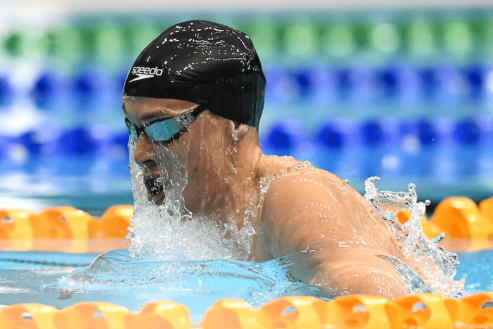



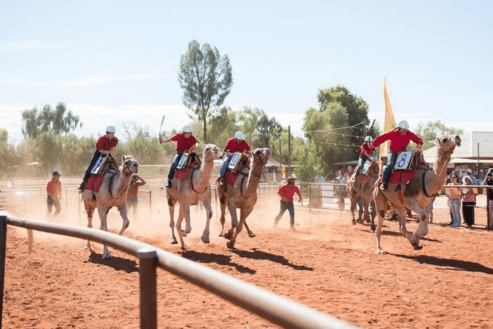
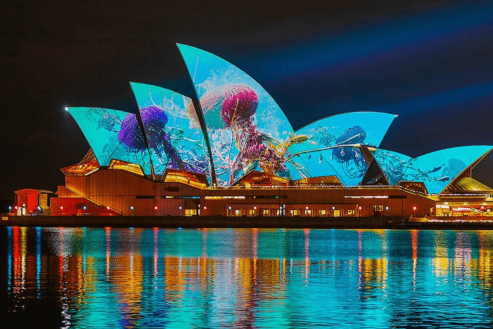
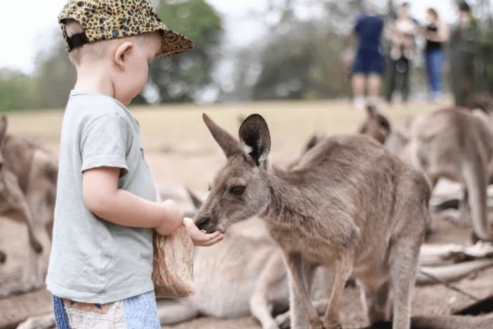
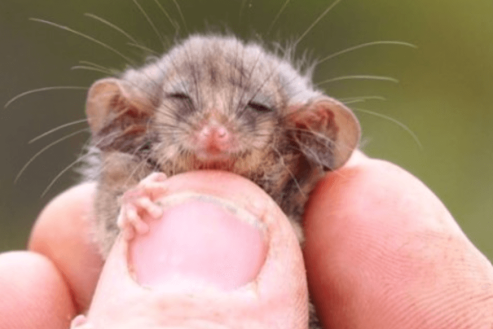
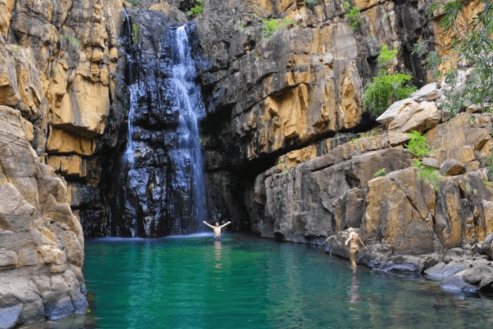
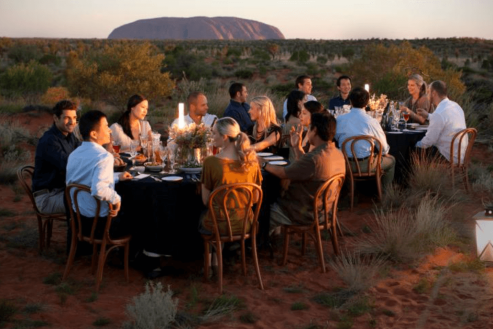
As legislation and travel requirements are constantly changing, we strongly recommend obtaining advice on your individual situation from a Registered Migration Agent. Please click here to book a consultation with one of our Registered Australian Migration Agents, located in Australia.






You can manage your membership and billing method by clicking here
Terms of Service
Privacy Policy
Copyright © 2025 Office of Immigration Australia, a private company registered in Australia. All Rights Reserved.